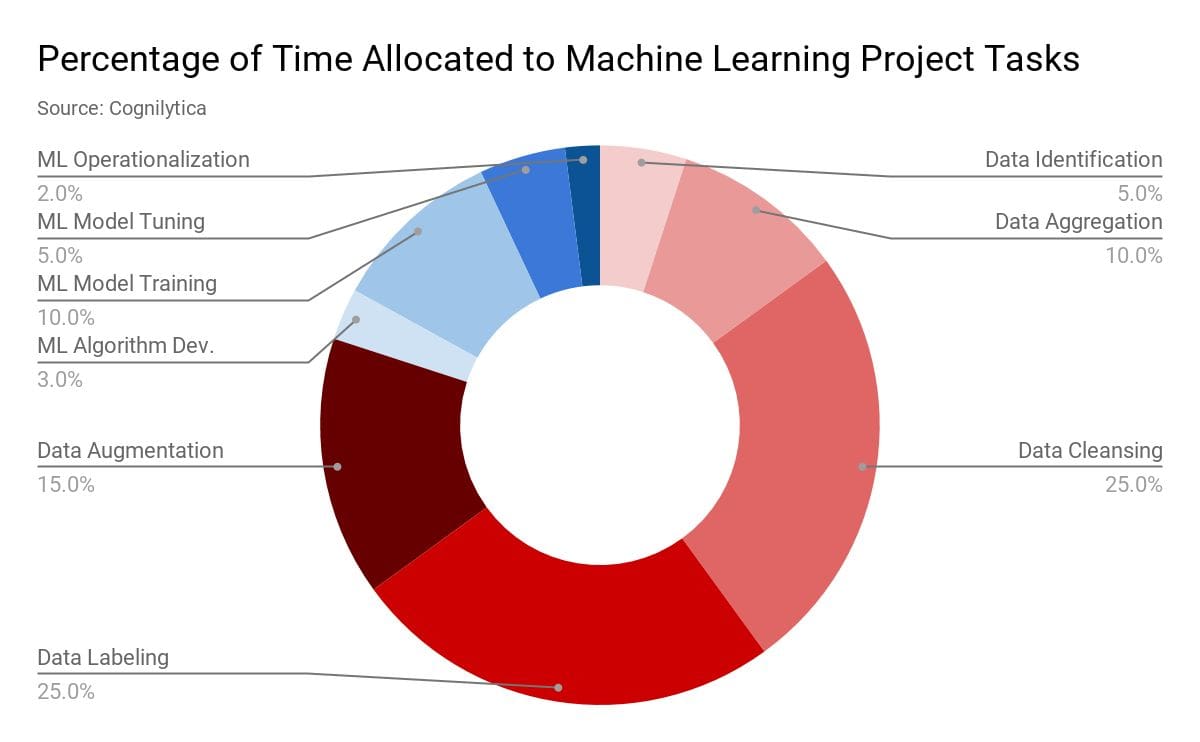High-Quality AI And Machine Learning Data Labeling At Scale: A Brief Research Report
Analyst firm Cognilytica estimates that as much as 80% of machine learning project time is spent on aggregating, cleaning, labeling, and augmenting machine learning model data. So, how do innovative machine learning teams prepare data in such a way that they can trust its quality, cost of preparation, and the speed with which it’s delivered?
Sponsored Post.
By Damian Rochman, VP of Products and Platform Strategy, CloudFactory
Across every industry, engineers and scientists are racing to prepare massive amounts of data for AI and machine learning (ML) advancements. Analyst firm Cognilytica estimates that as much as 80% of machine learning project time is spent on aggregating, cleaning, labeling, and augmenting machine learning model data. And a mere 20% of ML project time is spent on algorithm development, model training and tuning, and ML operationalization.

Major Data Labeling Challenges
Although innovation seems boundless, teams are hampered by the fact that well-prepared data are difficult to come by. There are two well-established considerations in this equation:
- High-quality data labeling yields better model performance, but when data labeling is low quality, machine learning models struggle to learn.
- It’s best to deploy top-notch and high-dollar talent such as data scientists and machine learning engineers on tasks that require deep expertise, collaboration, and analytical skills.
The Billion Dollar Question
So, how do innovative machine learning teams prepare data in such a way that they can trust its quality, cost of preparation, and the speed with which it’s delivered?
Key Takeaway: Comparing Data Labelers for Machine Learning
A growing number of organizations are using one or more of these four options to source data labelers for machine learning projects. Each choice brings benefits and challenges, depending on project needs, but for most organizations, understanding the tradeoffs helps pave the way for a clear strategic data labeling roadmap.
Critical Questions to Ask When Sourcing a Data Labeling Team
It only takes 10-15 minutes to read the full study, but if you don’t have time, we strongly suggest you ask potential workforce vendors these questions as they compare data labeling workforce options:
- Scale – Can your labeling team increase or decrease the number of tasks they do for us, based on demand?
- Quality – Can you provide us with visibility into work quality and worker productivity?
- Get the study for the full list of questions
